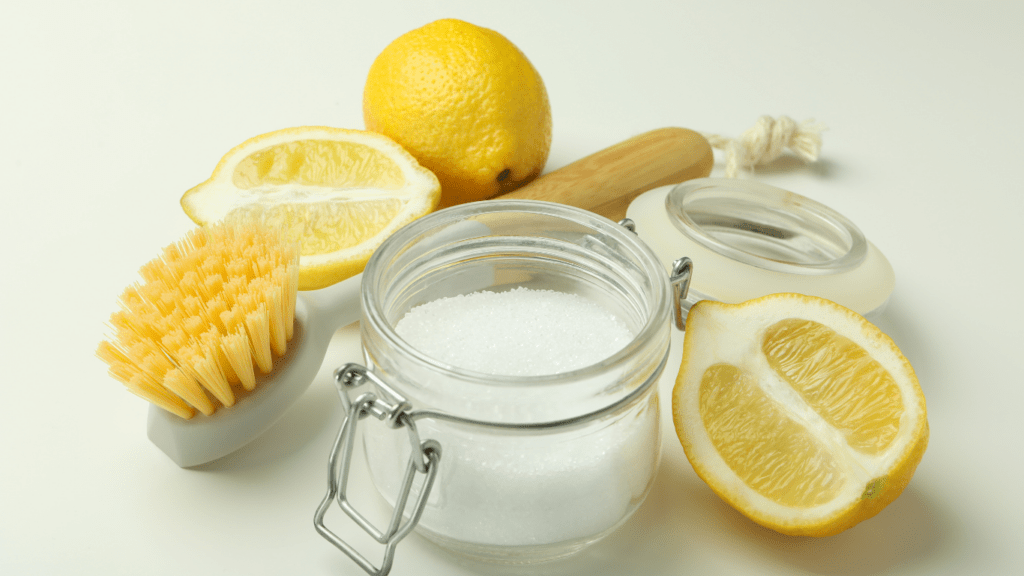The Benefits of Natural Household Products
Natural household products offer multiple advantages that make them a smart choice for any home. I’ll delve into two key benefits: health advantages and environmental impact.
Health Advantages
Natural products eliminate exposure to harmful toxins found in conventional cleaners. Many conventional products contain chemicals like phthalates and triclosan, which can cause respiratory issues and endocrine disruption.
By switching, I reduce the risk of allergies, asthma, and other health problems. For example, using vinegar and baking soda for cleaning minimizes my exposure to synthetic substances, promoting healthier air quality in my home.
Environmental Impact
Natural household products lessen environmental damage. Conventional cleaners often contain pollutants that contaminate water sources and harm wildlife.
By choosing biodegradable options, I help reduce pollution and conserve aquatic ecosystems. Additionally, making eco-friendly choices, like using plant-based detergents and refillable containers, decreases plastic waste and conserves resources.
When I opt for natural products, I actively contribute to a healthier planet for future generations.
Common Chemicals in Traditional Products and Their Dangers
Traditional household products often contain harmful chemicals. These chemicals pose serious risks to health and the environment.
Health Risks of Common Chemicals
Exposure to certain chemicals affects health in various ways. For example:
- Phthalates found in synthetic fragrances disrupt endocrine functions, potentially leading to hormonal imbalances and reproductive issues.
- Formaldehyde used in disinfectants and adhesives is a known carcinogen and can cause respiratory issues and skin irritation.
- Chlorine in bleach irritates the respiratory system and eyes, and long-term exposure increases the risk of chronic health problems.
- Ammonia found in window cleaners is a powerful irritant that affects the skin, eyes, and respiratory tract.
Health Canada identifies these chemicals as hazardous, emphasizing the importance of reducing exposure to them.
Environmental Hazards
Beyond personal health, these chemicals have detrimental effects on the environment:
- Phosphates in dishwasher detergents contribute significantly to water pollution, leading to eutrophication which depletes oxygen in water bodies and harms aquatic life.
- Nonylphenol ethoxylates (NPEs) in laundry detergents are toxic to aquatic organisms and disrupt hormone functions in wildlife.
- Volatile organic compounds (VOCs) released from aerosol sprays contribute to air pollution and the formation of ground-level ozone, affecting both human health and ecosystems.
- Triclosan used in antibacterial products persists in the environment, posing risks to aquatic organisms and potentially leading to antibiotic resistance.
The U.S. Environmental Protection Agency (EPA) highlights these issues and advocates for reducing the use of such hazardous chemicals.
How to Identify Natural Products
Understanding how to identify natural products ensures we choose safer and eco-friendly options for our households.
Reading Labels and Ingredients
Reading labels and ingredients helps in identifying harmful chemicals. Check for names like phthalates, formaldehyde, chlorine, and ammonia, which are common in conventional cleaners.
Look for ingredients lists containing natural substances like:
- vinegar
- baking soda
- essential oils
- plant-based surfactants
Pay attention to labels that use words like “biodegradable,” “non-toxic,” and “plant-based,” as they more likely indicate natural formulations.
Certifications to Look For
Certifications confirm the product’s adherence to natural standards. Look for certifications from the USDA Organic, Ecocert, and Green Seal.
These organizations verify that products meet rigorous standards for natural ingredients and eco-friendly manufacturing practices.
The USDA Organic label indicates a high percentage of organic content, Ecocert certifies products that balance environmental and social impacts, and Green Seal ensures the product meets strict health and environmental standards.
Steps to Transition to Natural Household Products

Transitioning to natural household products can be simple. By following specific steps, it becomes manageable and efficient.
Gradual Replacement Strategy
Incorporate natural products gradually to avoid wasting current supplies. Begin by replacing items you use the most, like all-purpose cleaners and dish soap.
Identify common areas where you can make changes, such as replacing chemical-based sprays with vinegar solutions or switching to biodegradable sponges. Make a checklist of items to replace over time.
Prioritize based on use frequency and exposure risks, replacing products with the highest health impact first.
DIY Natural Product Recipes
Creating homemade natural products saves money and ensures purity. Use ingredients like baking soda, lemon juice, and olive oil for various cleaning tasks.
For example, mix equal parts of vinegar and water as an all-purpose cleaner or use baking soda and water paste for scrubbing. Incorporate essential oils, like tea tree or lavender, which add fragrances and have antimicrobial properties.
Maintain a recipe journal, noting effective formulations and adjustments for specific needs or preferences.
 Williamond Hougherth - Founder of Green Commerce Haven
Williamond Hougherth is a visionary entrepreneur and environmental advocate with a deep passion for sustainable business practices. As the founder of Green Commerce Haven, Williamond has dedicated his career to promoting eco-friendly initiatives and supporting the growth of green startups. His extensive knowledge in green marketing strategies and organic products has made him a trusted voice in the eco-commerce industry. Through Green Commerce Haven, Williamond provides valuable insights on eco news, green tourism, and sustainable living, helping businesses and consumers alike make informed decisions that contribute to a healthier planet.
Williamond Hougherth - Founder of Green Commerce Haven
Williamond Hougherth is a visionary entrepreneur and environmental advocate with a deep passion for sustainable business practices. As the founder of Green Commerce Haven, Williamond has dedicated his career to promoting eco-friendly initiatives and supporting the growth of green startups. His extensive knowledge in green marketing strategies and organic products has made him a trusted voice in the eco-commerce industry. Through Green Commerce Haven, Williamond provides valuable insights on eco news, green tourism, and sustainable living, helping businesses and consumers alike make informed decisions that contribute to a healthier planet.
